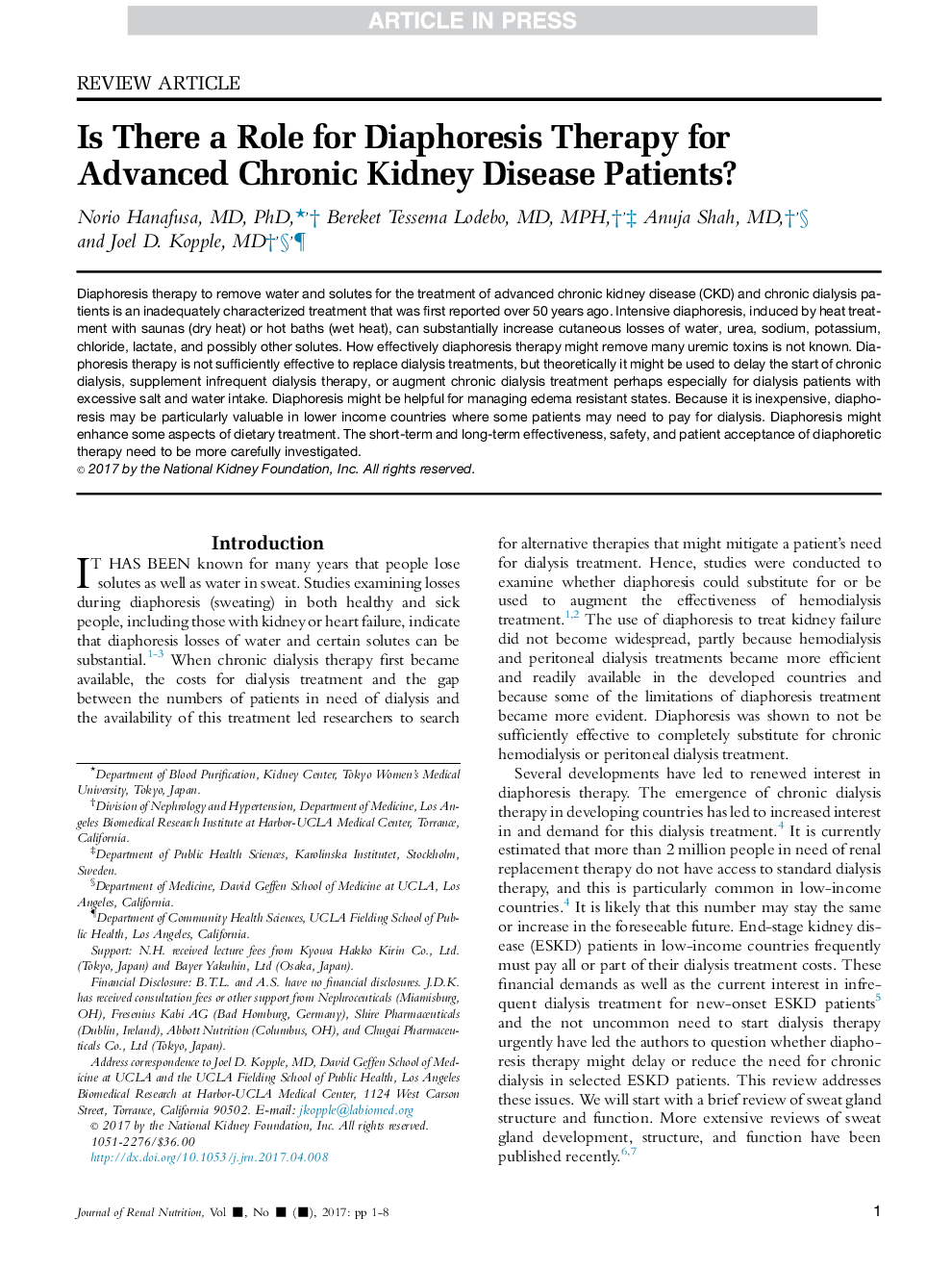| Article ID | Journal | Published Year | Pages | File Type |
|---|---|---|---|---|
| 8770360 | Journal of Renal Nutrition | 2017 | 8 Pages |
Abstract
Diaphoresis therapy to remove water and solutes for the treatment of advanced chronic kidney disease (CKD) and chronic dialysis patients is an inadequately characterized treatment that was first reported over 50Â years ago. Intensive diaphoresis, induced by heat treatment with saunas (dry heat) or hot baths (wet heat), can substantially increase cutaneous losses of water, urea, sodium, potassium, chloride, lactate, and possibly other solutes. How effectively diaphoresis therapy might remove many uremic toxins is not known. Diaphoresis therapy is not sufficiently effective to replace dialysis treatments, but theoretically it might be used to delay the start of chronic dialysis, supplement infrequent dialysis therapy, or augment chronic dialysis treatment perhaps especially for dialysis patients with excessive salt and water intake. Diaphoresis might be helpful for managing edema resistant states. Because it is inexpensive, diaphoresis may be particularly valuable in lower income countries where some patients may need to pay for dialysis. Diaphoresis might enhance some aspects of dietary treatment. The short-term and long-term effectiveness, safety, and patient acceptance of diaphoretic therapy need to be more carefully investigated.
Related Topics
Health Sciences
Medicine and Dentistry
Nephrology
Authors
Norio MD, PhD, Bereket Tessema MD, MPH, Anuja MD, Joel D. MD,
